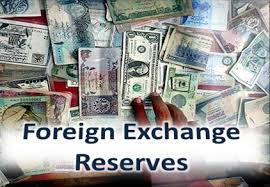Foreign exchange reserves is defined as the reserves of foreign currency kept as assets with the central bank. The quantity of the reserves can be affected by the monetary policies introduced by the central bank. The purpose of keeping foreign reserves is to import foreign goods and services and is primarily used to maintain a steady exchange rate by the central bank.
The foreign exchange in India has reached great heights and is said to be sufficient for funding 11 months imports. In the last month, the foreign exchange reserves touched a lifetime high of $355.46 billion. There had been a small dip in the reserves in the first week of July and currently the reserves are $354.5 billion. India has become one of the top nine foreign reserves holders in the world. In the words of S S Mudra, the deputy governor of the RBI – “Our reserves are at a reasonable level now”. In the last financial year the central bank had added $1.4 billion reserves whereas within the two months of the current fiscal the level has reached to $8 billion. It is therefore assured that India won’t be much affected by the Greek crisis or the crash of Chinese stock exchange.
Here are the benefits and purpose of keeping large amounts of foreign exchange reserves:
- Stabilize exchange rate: Central bank uses the foreign exchange reserves to stabilize the exchange rate. This is done in the form of buying and selling domestic currency in exchange of foreign currency in the world market. Suppose the dollar to rupee exchange rate is 1$ = 80 and the central bank want to revalue the rate, then, central bank will buy the domestic currency in exchange of the foreign currency ( from the reserves it holds) so that the supply of dollar is increased in the rest of the world and hence its price falls. If there will be no foreign reserves, then a central bank cannot influence the exchange rate. Therefore, having high reserves of foreign exchange implies exchange rate stability.
- Imports funding: Domestic country would be able to buy foreign goods if the forex reserves are adequate. It is used to meet all payment obligations in the rest of the world. The country will be able pay all its dues and achieve a balance of payment equilibrium. As the country will pay foreign debt easily, its credit rating will increase and hence better growth prospects. Adequacy of foreign exchange reserves is considered when it is sufficient to meet imports for three months and external debts becoming due in the near future.
- Precautionary holdings: In situations of financial crises, countries having low reserves suffer a lot. One example is the Asian crises. Countries like Malaysia, South Korea, Indonesia, Thailand etc. ran out of foreign exchange and the economies suffered a lot. Therefore, central banks keep foreign exchange reserves for precautionary purpose as well.
India is the leader of the growth in Asian economies in the current fiscal. No doubt, it is an epoch of development and growth for Indian economy.





24 Comments. Leave new
Informative !
Nicely written.
thanks
good efforts
thanks
Nice article
Thanks
Well done.
Thanks
VEry Well Written 😀
Thanks 🙂
Informative and well explained.
Thanks
nice article!
Well articulated.
Thanks
Informative
informative one..
Informative article..!
Aptly put!
Thank you everyone 🙂
Fedex is very important for the smooth functioning of the economy
good one 🙂
The foreign exchange reserve has accentuated to an incredible amount over these years, with an escalating figure of 355.4 billion usd we are indeed inq very sustainable position moreover our reserves of gold with the IMF has also crossed 20 billion usd mark, indeed great work megha, very well written commendable job